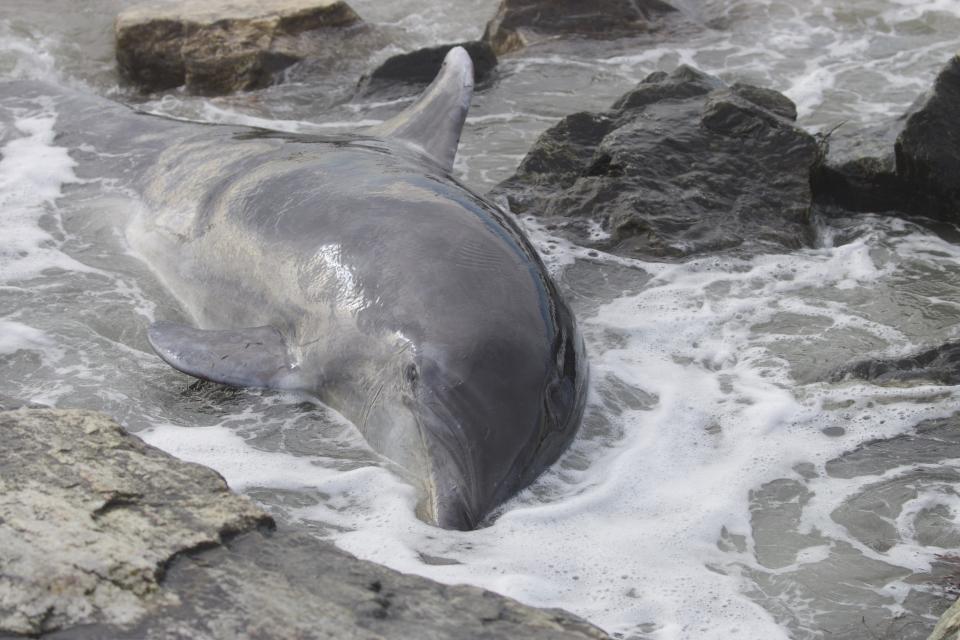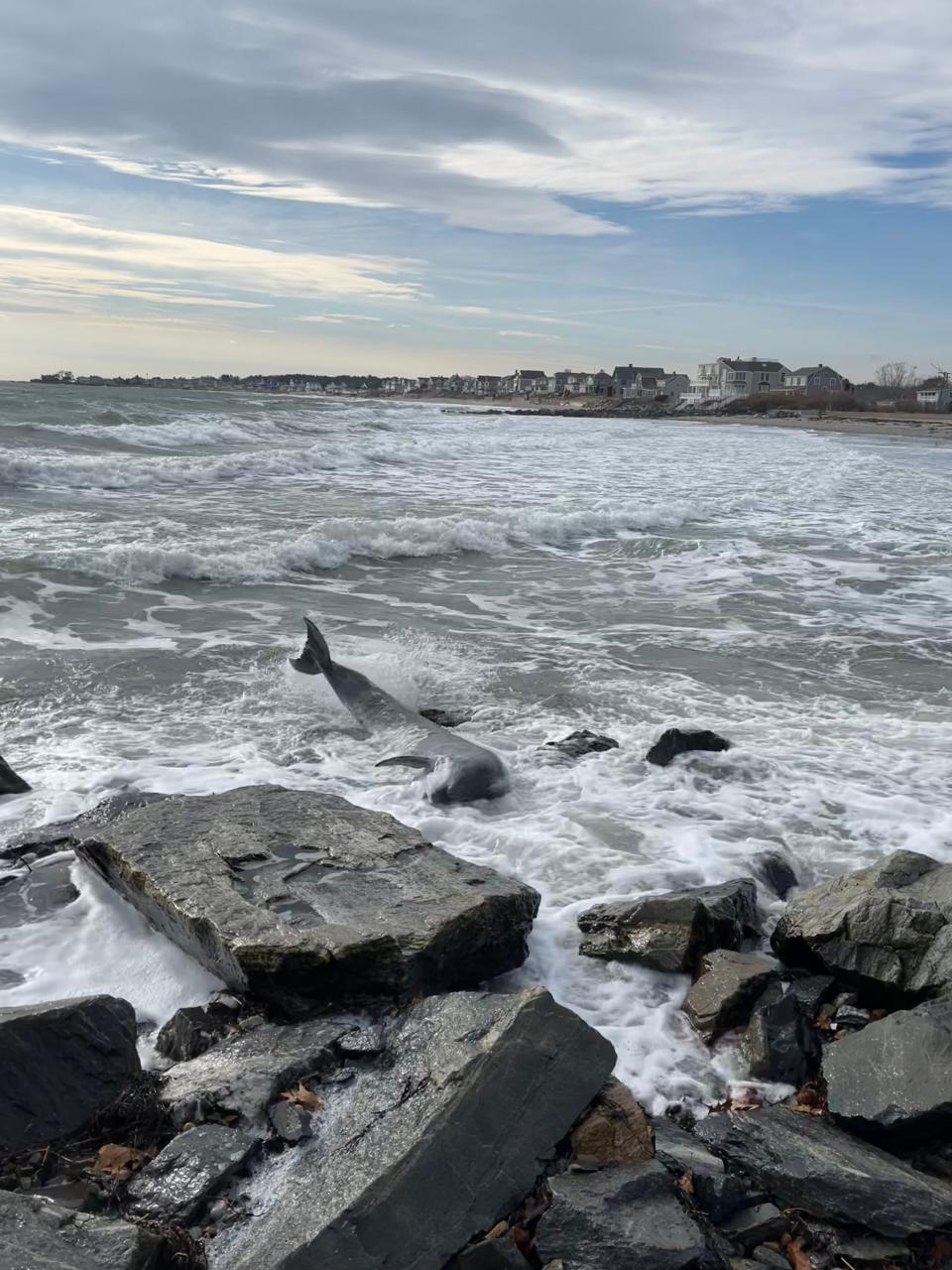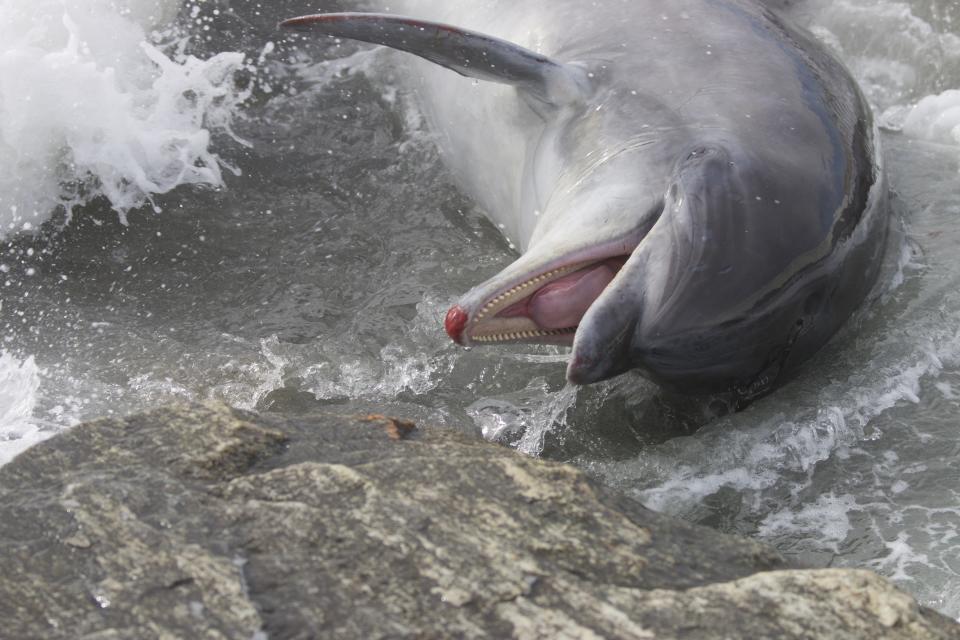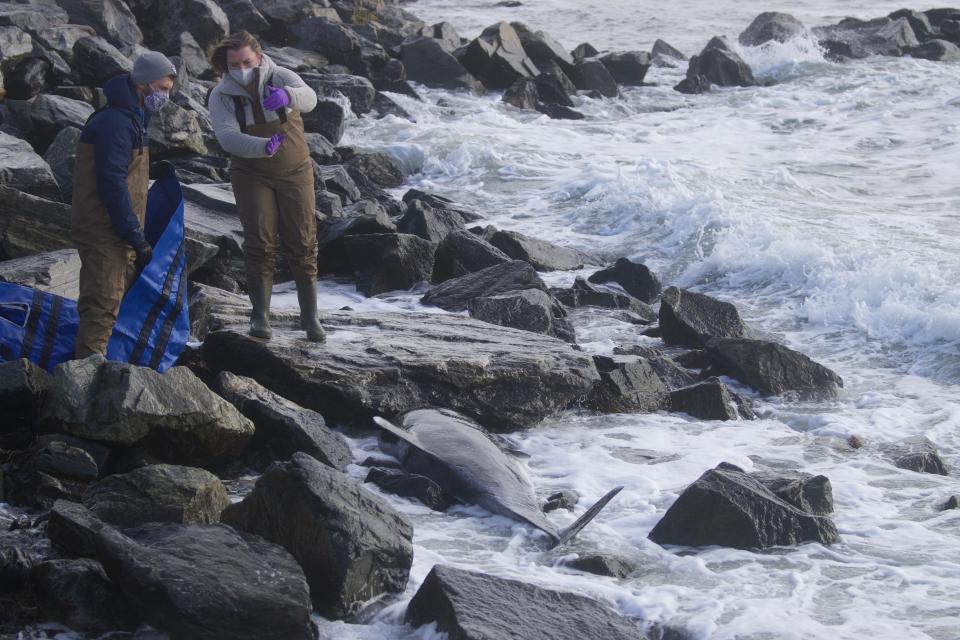Rare rescue attempt: 600-lb. bottlenose dolphin found in Rye dies. What you should know.
RYE — A 600-pound bottlenose dolphin died amid a rescue attempt at Wallis Sands last week that was a rarity on the New Hampshire Seacoast.
Ashley Stokes, the director of the Seacoast Science Center’s Marine Mammal Rescue team, said the group responds to about 110 calls each year, with roughly 95% of them related to seals.
The spotting of the dolphin, called in by a beachgoer just before noon Wednesday, Jan. 19, was one of about 5% of cetacean calls the team receives — those regarding whales, dolphins and porpoises. In more than 1,100 calls since 2013, this was just the third time the team was asked to help a bottlenose dolphin.

“You think of dolphins as these majestic creatures that live in the wild that you can see sometimes in whale watch boats, but you don’t often get to see them up close,” Stokes said.
'A lot of quality in a small space': Tiny home owners take step forward with new Maine law
Stokes said it isn’t uncommon for dolphins to be swimming near the coastline, particularly the common dolphin and the Atlantic white-sided dolphin. In the frigid winter waters of the Atlantic, she said, it’s a less common sight to see a bottlenose dolphin swimming in the area.
“I wouldn’t have necessarily expected a bottlenose dolphin, but it’s not exactly unheard of,” Stokes said.
Dolphin rescue attempt a 'stressful situation'
Marine Mammal Rescue employs volunteer responders in some instances, but in the case of cetaceans, which are not supposed to be on shore at all, a staff member is directly dispatched. Stokes and community outreach manager Brian Yurasits responded to the female dolphin, which they found stranded on the rocks at the northern end of the beach thrashing its tail.
More: Lobster fishing ban to save whales 'in crisis' is back off Maine coast, court rules
The hefty mammal, reported to be 9 feet long with a maximum girth of about 66 inches around, had likely been onshore for about an hour and appeared to have some external abrasions along her chin and tail, according to Stokes.
Stokes and Yurasits noted the dolphin was faced away from the tide, so they flipped it toward the water in hopes it might be able to work back into the ocean. The high tide, however, quickly turned the dolphin back over toward the rocks again and began to recede.

“It was already a stressful situation that she was on the rocks and had the waves crashing around her,” Stokes recalled.
The two responders faced the risk a strike from the dolphin’s flipper, with Stokes saying the impact has the potential to break several bones.
“We wanted to be very careful because human safety has to come first,” she said.
After taking photos of the dolphin, noting its breath count appeared to be normal and examining for external injury, Stokes and Yurasits called for additional rescue team members to assist in a potential lift of the dolphin back into the water.
'A huge security blanket': Portsmouth and Dover plan emergency water line across General Sullivan Bridge
The dolphin died around 1:15 p.m., as the expanded rescue team headed down the rocks to assist.
It took more than an hour for six people to transport the dolphin off the beach. It was brought to the University of New Hampshire for a necropsy performed by the New Hampshire Veterinary Diagnostics Laboratory the following day.

Full results of the exam are expected in the coming weeks. “She likely had an underlying condition that brought her to shore,” Stokes said.
An age was not determined for the adult dolphin, but it exhibited signs of past pregnancies, according to Stokes.
When the local rescue team receives calls for dolphins, they are usually dead and washed ashore, Stokes said. Responding to a live dolphin was highly unusual.
Stokes said, “It was neat to see it up close but it was hard at the same time.”
Since 2013, local crews have also been called to five reports of Atlantic white-sided dolphins, seven common dolphins and 27 porpoises.
What should someone do when they see a marine mammal on the beach?
Whether it’s a seal or a cetacean, alive or dead and decomposing, Stokes said, Marine Mammal Rescue wants member of the public to report what they’re observing so they can collect data.
“Even if you walk by and think it’s been dead for a few weeks, we still would love to hear about it,” she said.
For living mammals, particularly cetaceans, Marine Mammal Rescue has laid out a few specific steps for people to follow. The team advises staying away, at least 150 feet from all marine mammals — even the “semi-aquatic” seal that comes onto beaches to sleep, nurse or bask in the sun.
From that safe distance, people should remain quiet. Dogs should not be allowed to go up to any marine mammal on a beach and no food or water should be offered. Additionally, people should never pour water over a beached marine mammal, attempt to move it or place a towel or blanket over it.
“We can understand, sometimes these cases tug at your heartstrings and people want to help immediately, but sometimes people helping the animal are actually doing the opposite,” Stokes said.

All marine mammals can be reported to the Marine Mammal Rescue team hotline at (603) 997-9448, with the animal’s location, size, coloring and behavior.
“The biggest things are just to keep away, give us a call, you can even snap a photo from afar,” Stokes added.
It is illegal to disturb or harass any marine mammals and anyone found guilty of doing so could be subject to civil or criminal penalties.
The Marine Mammal Rescue team will get back in touch with people who report beached mammals, who sometimes ask if they can stay to observe rescue efforts. Stokes said that, from a safe distance, they allow members of the public to stand by as those efforts are conducted.
“Education is a big part of what we do,” she said.
Information: seacoastsciencecenter.org/marine-mammal-rescue
This article originally appeared on Portsmouth Herald: 600-lb. bottlenose dolphin found in Rye NH dies in rare rescue attempt

